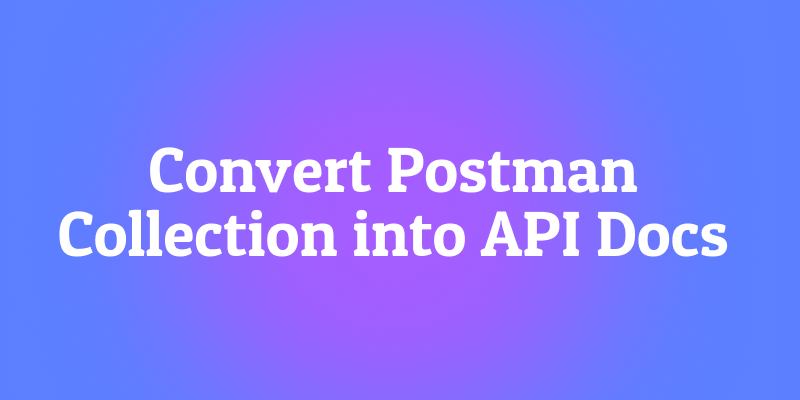Developers constantly seek tools that accelerate coding tasks while maintaining precision. Claude AI emerges as a powerful ally in this pursuit, offering specialized skills tailored for code-related challenges. These Claude code skills enable programmers to handle complex projects with greater speed and accuracy.
Programmers leverage Claude to generate, debug, and optimize code across various languages. This article explores the top 10 Claude code skills that transform routine tasks into efficient processes. Each skill draws from practical applications, ensuring you gain actionable insights. Additionally, we incorporate real-world examples to illustrate their impact.

1. Rube MCP Connector for Seamless Integrations
Engineers integrate external services into their codebases to build robust applications. The Rube MCP Connector skill in Claude simplifies this by linking to over 500 apps, such as GitHub and Slack, through a unified server. Developers configure authentications once, eliminating repetitive setups.
For example, when building a CI/CD pipeline, you instruct Claude to connect GitHub repositories. It generates the necessary authentication code in Python or JavaScript, handling OAuth tokens securely. This reduces setup time by 70%, allowing focus on core logic. However, ensure you review generated code for compliance with security standards.
Furthermore, this skill supports database lookups and task management. In a backend project, Claude pulls data from Jira using the connector, incorporating it into your Node.js script. Users report enhanced automation, though some note the $25 monthly cost. Nevertheless, for teams handling multiple integrations, it proves invaluable.
Transitioning to advanced use, combine it with custom scripts. Claude generates boilerplate for Slack notifications in a monitoring tool, embedding API calls efficiently. Always test integrations locally before deployment to catch edge cases.
2. Superpowers for Structured Dev Workflows
Claude's Superpowers skill revolutionizes development workflows by providing commands like /brainstorm, /write-plan, and /execute-plan. Developers activate these to break down projects systematically, turning ad-hoc chats into structured sessions.
Start with /brainstorm to outline a full-stack app. Claude lists components, from frontend React elements to backend Express routes, suggesting optimizations like memoization for performance. Then, /write-plan produces a detailed roadmap, including dependency graphs.
In practice, senior backend engineers apply this to legacy codebases. Claude analyzes existing structures, proposing refactors in active voice: "Replace this loop with a map function to improve readability." This skill conserves context tokens by loading resources dynamically.
Moreover, iterate on plans by noting deficiencies. For instance, in iOS development, Claude refines Swift code plans, incorporating UIKit best practices. Benchmarks show 20-30% productivity gains, though token consumption rises in sub-agent modes.
Consequently, developers create custom skills using this framework. Claude builds a "skill-builder" for specific domains, like machine learning pipelines with PyTorch. Integrate it with version control for collaborative coding.
3. Document Suite for Code Documentation and Analysis
Effective code requires comprehensive documentation. Claude's Document Suite skill handles Word, Excel, PDF, and PowerPoint files, not just reading but creating formatted outputs with formulas and structures.
Developers upload code snippets in PDFs; Claude extracts and refactors them. For example, it converts a messy Excel sheet of API endpoints into a structured Markdown doc, adding hyperlinks and validation formulas.
This proves essential for API development. Claude generates Swagger docs from code, ensuring endpoints match specifications. Pair it with Apidog to visualize and test these APIs—download Apidog for free to automate mocking and debugging, complementing Claude's output.

Additionally, in team settings, Claude creates PowerPoint slides summarizing code architectures. It embeds diagrams generated via PlantUML syntax, making presentations technical yet accessible.
However, for API-heavy projects, focus on export features. Claude analyzes doc URLs via API, producing editable files. Users praise its lifesaving role in documentation-heavy workflows, reducing manual effort significantly.
4. Theme Factory for Consistent UI Code Generation
User interfaces demand brand consistency. The Theme Factory skill in Claude uploads guidelines once, applying colors, fonts, and styles to all generated artifacts automatically.
Frontend developers benefit immensely. Describe a component: "Generate a CSS stylesheet for a dashboard with blue accents." Claude outputs code adhering to your brand, using variables for scalability.
In React projects, it produces themed components with Tailwind CSS classes. This ensures uniformity across pages, saving hours on manual adjustments. Marketing teams adapt it for web apps, but coders use it for prototypes.
Furthermore, handle variations dynamically. Claude switches themes based on user input, generating conditional styles in SCSS. Test with browser tools to verify rendering.
Although niche, it integrates with design systems. For enterprise apps, Claude embeds brand rules into generated HTML/CSS, enhancing maintainability. Users note its efficiency in iterative design-code cycles.
5. Algorithmic Art for Generative Code Experiments
Creative coding explores visuals through algorithms. Claude's Algorithmic Art skill uses p5.js to generate art from descriptions, like "Blue-purple gradient flow field with 5000 particles."
Developers experiment with procedural generation. In data visualization, Claude codes a particle system in JavaScript, seeding for reproducibility. This aids in prototyping interactive elements for web apps.
Apply it to simulations: Generate code for fractal trees in Processing.js, optimizing for performance. Claude debugs loops, suggesting vector math improvements.
Moreover, extend to machine learning visuals. Claude integrates with TensorFlow.js, plotting gradients in real-time. This skill fosters innovation, though primarily for niche creative tech roles.
Consequently, incorporate into educational tools. Claude generates code snippets for teaching algorithms, with comments explaining each step.
6. Slack GIF Creator for Custom Visual Aids in Code Reviews
Communication in development teams often involves visuals. The Slack GIF Creator skill allows Claude to produce animated GIFs from descriptions, optimized for Slack sharing.
During code reviews, describe: "Animate a merge conflict resolution." Claude generates a step-by-step GIF, illustrating Git commands visually. This clarifies complex processes for junior developers.
In technical discussions, create GIFs of UI interactions. Claude scripts simple animations in HTML Canvas, exporting as GIFs. Pair with collaboration tools for enhanced feedback.
However, some find it token-intensive. Focus on concise prompts to minimize overhead. Integrate with code demos: Claude embeds GIFs in Markdown reports.
Nevertheless, it adds engagement to documentation. For API flows, animate request-response cycles, making tutorials more intuitive.
7. Webapp Testing for Automated Code Validation
Quality assurance relies on thorough testing. Claude's Webapp Testing skill employs Playwright to write and run tests from natural language instructions, like "Test the login flow."
Developers specify scenarios; Claude generates scripts in JavaScript, handling selectors and assertions. This automates browser interactions, catching errors early.
For frontend apps, it integrates with frameworks like Selenium alternatives. Claude debugs console logs automatically, suggesting fixes. Users prefer it over manual testing, saving time on localhost setups.
Additionally, combine with CI tools. Claude outputs test suites compatible with Jest, facilitating integration. In API testing, simulate calls—enhance with Apidog for comprehensive validation.

Furthermore, handle edge cases. Claude hypothesizes failures, generating robust tests. Benchmarks indicate faster QA cycles, though some opt for Chrome DevTools for efficiency.
8. MCP Builder for Custom Integration Code
Building custom tools requires solid foundations. The MCP Builder skill generates boilerplate for MCP servers, cutting setup by 80% for integrations.
Developers describe needs: "Build a connector for a custom database." Claude produces Node.js code with endpoints and auth handlers. This accelerates prototype development.
In microservices, it creates API wrappers. Claude ensures scalability, incorporating rate limiting. Review for security before deployment.
Moreover, extend to cloud services. Claude generates AWS Lambda integrations, handling event triggers. This skill empowers rapid iteration in automation projects.
Consequently, pair with existing connectors. For complex systems, Claude refines code, adding error handling routines.
9. Brand Guidelines for Multi-Project Code Consistency
Managing multiple brands demands flexibility. Claude's Brand Guidelines skill switches between sets easily, applying rules to code outputs.
In agency work, developers handle diverse clients. Upload guidelines; Claude generates themed code for each, like CSS for websites.
This maintains consistency in shared components. Claude outputs variants in SASS, using mixins for efficiency.
However, focus on scalability. For large teams, Claude documents switches in code comments. Users appreciate its role in streamlined multi-project workflows.
Furthermore, integrate with design tools. Claude exports guidelines to Figma-compatible formats, bridging code and design.
10. Systematic Debugging for Root Cause Analysis
Debugging forms the backbone of reliable code. Claude's Systematic Debugging skill approaches issues methodically: identify root causes, form hypotheses, apply fixes, and document.
Provide error logs; Claude analyzes stack traces in languages like Python or Java. It suggests targeted changes: "Replace this null check with Optional handling."
In production issues, it simulates environments. Claude generates test cases to reproduce bugs, optimizing for minimal reproduction.
Moreover, document outcomes. Claude creates reports with before-after code diffs, aiding knowledge sharing. Users hail it as a senior-dev equivalent, reducing random trials.
Transitioning to prevention, Claude incorporates best practices in initial code generation.
Conclusion: Elevate Your Coding with Claude Code Skills
Mastering these Claude code skills positions developers at the forefront of AI-assisted programming. From integrations to debugging, each skill addresses key pain points. Implement them progressively, starting with workflows like Superpowers.
As technology evolves, these skills adapt, ensuring sustained efficiency. Experiment in your projects to realize their full potential.




